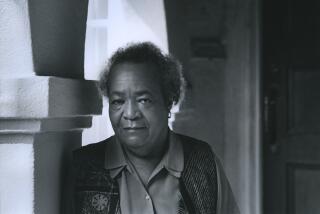Elaine Hodges, 69; Scientific Illustrator for Smithsonian
- Share via
Elaine R.S. Hodges, who combined art with science in her meticulous drawings of insects and other organisms as a scientific illustrator at the Smithsonian’s National Museum of Natural History, died June 27 of breast cancer at her home in Eugene, Ore. She was 69.
She retired to Oregon 10 years ago after 31 years at the museum, where she became one of the country’s leading figures in her exacting field.
Hodges’ illustrations of bees, moths, mosquitoes, fleas and other invertebrates were seldom seen by the vast numbers of visitors at the Smithsonian’s museums in Washington, D.C. Instead, they appeared primarily in scientific papers and books as part of the research of Smithsonian scientists.
She was a founder of a professional group, the Guild of Natural Science Illustrators, and was the editor of the leading book on the topic, the “Guild Handbook of Scientific Illustration,” first published in 1989 and revised in 2003.
“Elaine was one of the absolute masters in the field,” said Pamela Henson, director of institutional history at the Smithsonian Institution Archives.
“She wrote the textbook on natural history illustration,” said Robert Robbins, an entomologist at the Natural History Museum and Hodges’ former supervisor. “In that sense, she was a world figure.”
Hodges followed an artistic tradition that dates to ancient Greece and early attempts to classify animals and depict medical ailments. Since then, artists have illustrated almost every branch of science.
Much of her work was done with the aid of a microscope, and she understood the limits of cameras and digital technology. Some subtleties, she knew, can be captured only by an artist’s hand.
“Photographs simply cannot do it, because they are not accurate,” she told the Eugene Register-Guard in 2000. “If you draw from a photograph, you can be sure you’ll be in trouble with accuracy.”
Peering through a microscope at her tiny specimens -- often damaged by the time they reached her -- Hodges drew in pencil or ink. She sometimes painted with brushes dipped in carbon dust. Most scientific publications require black-and-white artwork, but she also executed some striking full-color images of bees.
“Many scientific illustrations are breathtakingly beautiful, but you cannot have artistic flourishes,” said Henson, who co-curated the 1996 exhibition “Eye on Science” with Hodges. “It has to be real and accurate.”
Elaine Rita Snyder was born in Washington on March 7, 1937, and was drawing before she was a year old. She took a summer course at the Corcoran Gallery of Art when she was about 10 but otherwise had little early training. She studied at the Pratt Institute in New York. By 1963, she had found a job as a clerk at the Smithsonian. She ran into an acquaintance from Pratt who suggested she take up scientific drawing.
She was an illustrator with the Museum of Natural History from 1965 to 1996, and during that time studied biology at the University of Maryland.
Her husband, former Agriculture Department entomologist Ronald Hodges, said one of her painstaking drawings could take up to 80 hours to complete. Each hair on a moth’s legs, for instance, had to be drawn precisely to scale.
Through her artistry and the Guild of Natural Science Illustrators, Hodges became a prominent figure in her field. She spent years working on the “Guild Handbook of Scientific Illustration,” enlisting the help of dozens of artists with the 575-page book.
An early marriage, to Irving Taylor, ended in divorce.
In addition to her husband of 39 years, survivors include two sons from her first marriage, Steven Hodges of Santa Barbara and Lawrence Hodges of Germantown, Md.; her father, Samuel Snyder of Frederick, Md.; a sister; three brothers; and two grandchildren.
More to Read
Sign up for Essential California
The most important California stories and recommendations in your inbox every morning.
You may occasionally receive promotional content from the Los Angeles Times.













